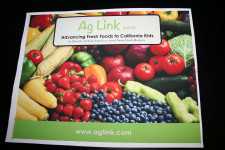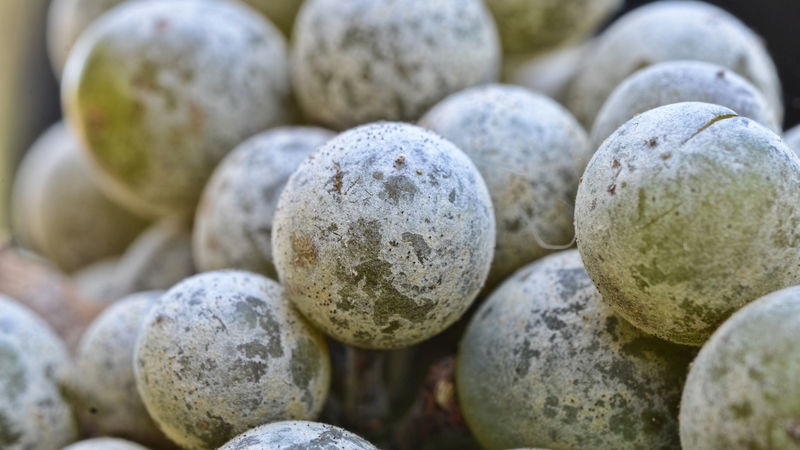Linking Farms And Schools

It’s almost criminal, Jana Nairn was saying, how little of the average food dollar in the U.S. goes to farmers, pointing at a graphic showing it is a measly 14¢. Nairn says that’s why she and her husband, Rob, founded a new Internet e-commerce website, Ag Link, at the beginning of the current school year. “How to put more money in farmers’ pockets has always been an interest of mine,â€� she says.
The Nairns live in the small town of Ballico, CA, in the northern San Joaquin Valley. After they each attended Cal Poly San Luis Obispo — both studying ag in some form — they returned to the family farm where they primarily grow 200 acres of almonds. They also run a business called Rubber Bark, where they turn old tires into playground material, which proved helpful in making school connections vital to the success of Ag Link.
The e-business does just what it says, providing a link for growers to sell their produce directly to the schools. Rob chimes on his wife’s point about how unfair the traditional sales model is to farmers. “The grower takes the risk, but he only gets a small piece of the pie,� he says. “With Ag Link, if the grower takes up a little of the distribution, he will get a much bigger piece of the pie.�
Adds Jana: “Also, the schools pay less, and the kids get better tasting produce,� she says. “Where do you stop with the win/win/win scenario here?�
Huge Interest
Ag Link certainly makes sense to a number of people, as since August they’ve signed up districts with a total of 49 schools and more than 100 growers. Rob thought it would be an easy sell to growers, but tougher for the schools because they wouldn’t want to deal with so many growers. But many school administrators caught on right away.
“A lot of the growers are the same growers they were buying from before,� he said. “We’ve just eliminated the middleman.�
Once school administrators realized they just had to go on the website to be in touch with so many growers, they were sold. It was the growers who needed some convincing. “The older generation largely doesn’t understand how the technology will help them,� he says. “You have to explain it to their kids.�
 Rob’s uncle, Dennis, who does a lot of the necessary field work at Ag Link, says many older growers still have a fear of the Internet. It doesn’t help that in the rural areas where they largely live, Internet service has paled in comparison to that enjoyed by urbanites. But usually he can get them to come around by making one single point. “You’re working with a school, so you’ve got a client, a big client, for life,� he says. “Restaurants don’t always last.�
The Need Is There
One other problem growers might have is that they have small operations, and because of that they are in the field all the time tending their crops. Dennis says they have started helping them by posting what they have for sale. And while they won’t deliver for them — Ag Link’s not interested in getting into the trucking business — they will get them set up with a third-party trucking company.
Distribution is actually an advantage for some growers as they have their own fleets of trucks. Because of that, they can make the decision of how far they want to make deliveries. On the other hand, many school districts themselves have fleets of trucks out delivering school lunches etc., and they will sometimes stop and pick up produce from the growers.
Jana says the distribution flexibility illustrates how intent they are on making Ag Link a seamless site. While each school district will see producers listed in the order of how close they are, Ag Link will put the quantity and distance together. While they just started in the Turlock/Modesto area, they are now expanding down to Bakersfield and out to the Pacific Coast. “We feel like we’ve started something special here,� she says.
The response has been overwhelming, adds her husband, likening it to a snowball going downhill. Adds Dennis: “I thought we’d do half the volume Rob originally projected, and it turns out he was low. I thought maybe a case here and a case there, but we got pallet orders right away. It just shows the need’s there.”
Â









